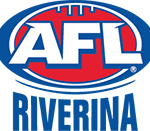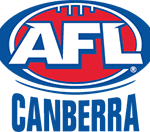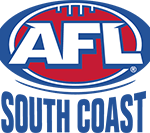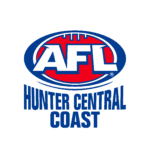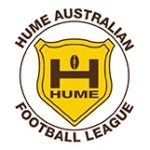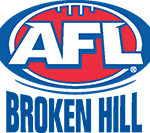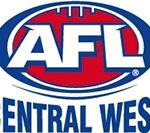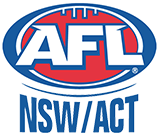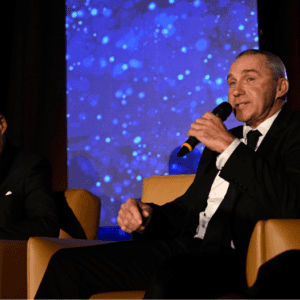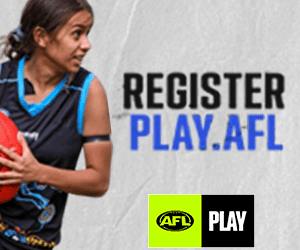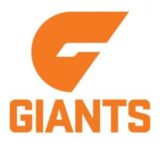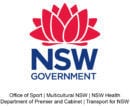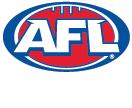Club of the Week: Sydney Hills Eagles
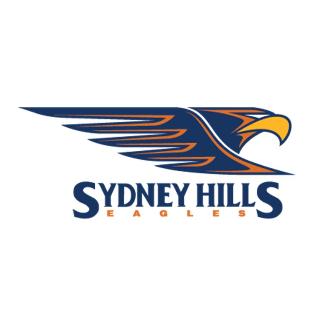
By Alison Zell
The history of the Sydney Hills Eagles can be traced back to the formation of the Baulkham Hills Junior Australian Football Club in 1976. Since 1976 Baulkham Hills has fielded teams in all age groups in the major junior competition in suburban Sydney.
Baulkham Hills were one of the most successful junior clubs in Sydney, having enough players to field two teams in every age group in most seasons and more often than not winning the premiership. In the mid-to-late 1980s it was not uncommon for two Baulkham Hills teams (then known as the Hawks and the Kookas) to play each other in grand finals.
In 1988, the club had enough numbers to field an Under-19s team in the Sydney Football League. As the Sydney University club could not field an Under-19s team, Baulkham Hills played in their stead. The team had a successful season, eventually finishing in fourth place after losing the first semi-final to Pennant Hills. As this team was an amalgamation of players from the Hawks and the Kookas, a new emblem – the Falcons – was born. The team played in a maroon jersey with gold stripes, similar to the jersey of the Subiaco club playing in the WAFL.
In the early 1980s Baulkham Hills played in the SDSFA at their home ground at the Kellyville Postal Institute Club, then later moved to Charles McLaughlin Reserve.
In 1989, the club fielded a senior team competing in the Sydney Football Association (Division 2) competition. The team met with moderate success in their first year, finishing fourth in a seven team competition, being knocked out of the finals race in the first semi-final.
In 1990 the club fielded teams in the Sydney Football Association (SFA) Division 1 competition in the First Grade, Reserve Grade and Under-20s competitions. 1990 was a successful season, with the first grade team eventually losing the Grand Final to Balmain at Erskineville Oval and the late Doug Scholz winning the Snow Medal for the best and fairest player in the competition.
In the following year the Falcons turned the tables on Balmain and won their first senior Premiership in a keenly fought match at Roger Sheeran Oval.
By 1993 the club had outgrown the SFA and was promoted to the Sydney Football League. The Falcons endured a tough couple of years in 1993 and 1994 before making the preliminary final in 1995. It was in 1995 that the club produced its first Phelan Medallist (Best and Fairest in the AFL Sydney competition) in ruckman Graham Jones.
Between 1996 and 1999 the club struggled but a highlight was Jarrod Crosby winning the club’s second Phelan Medal in 1998.
Before the 2000 season began, the club struck up a partnership with the West Coast Eagles and was renamed the East Coast Eagles with the club adopting their new playing strip of blue and yellow.
In 2006, the club went undefeated through the home and away season and easily won their second Semi-Final to qualify for the Grand Final. But in a shock result, the Eagles suffered their only loss of the season on Grand Final Day, going down by two points to Pennant Hills in wet conditions at Henson Park.
In 2008 the club finished the season in fourth before defeating North Shore by 50 points, St George by 65 and UNSW/Eastern Suburbs (by 45) to reach their second Grand Final in three years against arch rivals Pennant Hills. Despite trailing by just 17 points at half time, the Eagles ended up going down by 104 points on a blisteringly hot September day.
In 2009 the club moved to their new oval Bruce Purser Reserve on the corner of Withers Rd and Commercial Rd, Rouse Hill
That same year, the East Coast Eagles won their first ever AFL Sydney Premiership, winning the Grand Final against UNSW/Eastern Suburbs 22.12 (144) to 13.12 (90). Gus Seebeck kicked 10 goals for the game.
In 2010, the Eagles did it again securing back-to-back Premierships by defeating Sydney Uni at Blacktown Olympic Park – 13.9 (87) to 10.10 (70). Damien Bowles claimed his first Club Champion medallion to go with his Rod Podbury Medal on Grand Final Day. Damien was unlucky not to also claim the League’s Phelan Medal when, after polling the most votes, he was ruled ineligible due to suspension.
In 2011 the Eagles completed the three-peat by defeating the UNSW/ES Bulldogs and winning their third consecutive Sydney AFL Premier Division Premiership.
Following the completion of the 2011 season, the club was admitted to the North East Australian Football League (NEAFL) – the premier competition for NSW/ACT – and subsequently the name of the club was changed to the Sydney Hills Eagles.
Peter Physick has been involved in the club for over 20 years after moving to Sydney in 1990.
“When my wife Laima and I moved to Sydney in 1990, our sons Ben and Tim were aged 11 and 9 respectively and they needed their ‘footy fix’,” he said.
“We joined the Baulkham Hills Falcons, the local junior club for the Castle Hill area, and our life in Sydney football had commenced.
“For the first six years I offered assistance wherever needed and undertook a variety of roles ranging from goal umpiring and cooking the BBQ before graduating to team management and eventually coaching.
“In 1995 I joined the committee and became President in 1996 of both the Falcons’ Junior and Senior Clubs, a role I was to hold for the next 12 years, which also spread across the formation of the East Coast Eagles.”
Peter has seen the club evolve enormously over his time involved in footy.
“It was only in 1993 that the Baulkham Hills Club was admitted to the senior Sydney AFL competition,” he said.
“In 1999 we revolutionised the Club by changing its name and breaking the senior club away from the juniors.
“The East Coast Eagles were formed and for the next eight years we played without a home ground with home matches played wherever an available oval could be secured.
“It was tough but we struggled along, while at the same time negotiating with Council for land at Rouse Hill to build what we hoped would be a home ground that could become the envy of all in Sydney.”
They succeeded in that aim with the club’s brand new home at Bruce Purser Reserve established in 2009.
Club Manager Gavin Lawrence is new to the club but has helped the Eagles continue their strong relationships with the local community.
“The Club works hard to develop and maintain close relationships with all junior AFL clubs in the region from the Kellyville Magpies, Baulkham Hills Hawks, St Clair Crows, Hawkesbury Saints and Quakers Hill Bombers,” Gavin said.
“We also try to encourage as many local businesses as we can to support AFL in the region.
“Our goal is to continue to develop Bruce Purser Reserve into a leading community facility to develop sportspeople across the community.”
Gus Seebeck is a former player and now Chairman of the club and said the goals for the growth of the club haven’t changed over the years.
“Our main goals are to provide playing pathways for AFL players in the Sydney Hills at both the elite and participant level, to be a successful club across all grades in which we compete both on and off the field and to help to grow the code of AFL and provide a positive experience for all involved.
“There is no question that our ascension to the NEAFL has made these goals all the more challenging, but we have a robust plan to keep the club growing and successful.”

